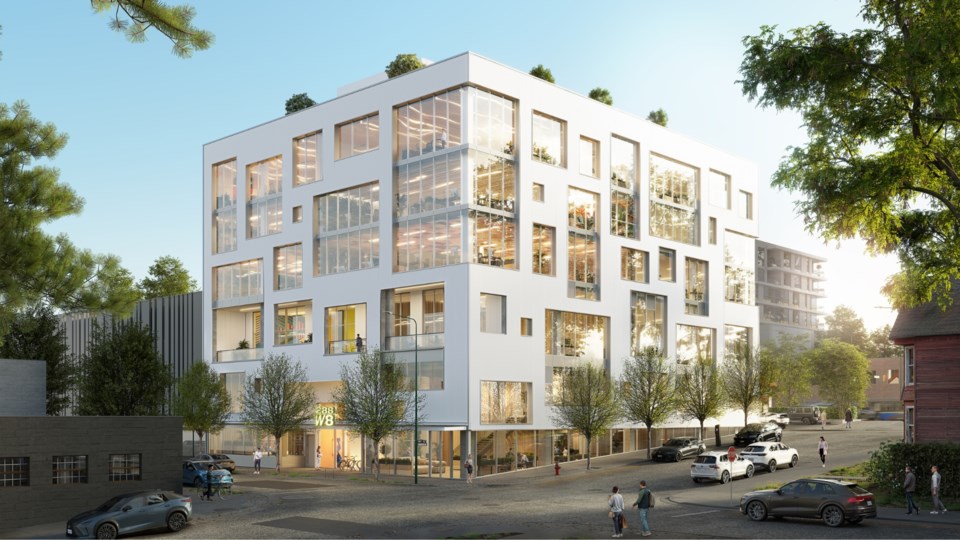While financing costs have started to normalize, developers continue to focus on combining uses in new projects in order to mitigate risk and broaden the base of potential occupants.
“What changes the financing terms for mixed use is the size and the location along with the size of the strata lot conjunction,” said Jason Turcotte, president of Vancouver developer OpenForm Properties Ltd. “With a realistic and a reasonable pre-sale threshold to achieve, banks will generally look at a commercial pre-sale authorization the same way they do residential with coverage on the loan.”
The broader question, then, is whether mixed-use buildings play a role in mitigating financial risk.
Some developers say retail can increase the overall cost to build a mixed-use development, though the cost to produce a retail unit is typically less per square foot than the cost to produce a fully finished residential unit.
Turcotte cites the example of a grocery-anchored residential-retail project as a proactive strategy when it comes to mixing uses.
“There is an opportunity just by diversifying the product types to secure more of that revenue in advance, which helps you finance the project” he said.
“[A grocery store] will often come to the table and be part of your revenue model early,” he said. “You can take a lease arrangement with a grocery anchor through your bank as somewhat of a pre-sale. It’s a lease, but it does help to lessen the obligation on how much pre-sale product you need.”
OpenForm recently announced a new mixed-use project at 288 W. 8th Ave. in Vancouver’s Mount Pleasant neighbourhood. The 49,000-square-foot project will combine strata industrial units on the first and second storeys, with office space above. Pre-sales begin in May, with construction anticipated to start later this year. Completion is set for late 2027.
The project secured additional density under the Broadway Plan as it included commercial spaces that will support employment.
“We have got a little extra density through this zoning that was derived because of the Broadway corridor plan and is super-served by what will be two transit routes,” Turcotte explained.
Downtown Vancouver and Burnaby are also seeing new mixed-use projects. These include office projects with hotel space such as the Highline in Burnaby, and Kalido’s project at 225 Smithe St.
With the potential to diversify revenue through multiple income streams, mixed-use developments can support density and financing, according to Tom Davidoff, an associate professor at the University of British Columbia and a housing economist.
“Generally, it makes things feasible. In order to do a project you have to take more for the land than the land is worth in its current use. Take the present discounted value of rents at current use forever. A minimum threshold for profitability is that the new use has to be bigger in added value to tear down what’s there and build what’s new,” Davidoff told Western Investor.
In Greater Vancouver, experts say the favoured mix in mixed-use developments is a combination of residential and retail. Some projects include industrial and light industrial, while office spaces are slowly seeing demand increase in the post-COVID landscape.
“If something has a residential component with it, immigration will open back up eventually, international students will get stacked back in,” said Cory Wright, managing director for B.C. with William Wright Commercial. “With international students in, that is going to drive a lot of the housing components. Retail will always do well especially if owner-occupiers can acquire dental/medical practitioners.”
According to Wright, tri-mix developments – those that incorporate three uses in one property, such as residential, office and light industrial – will be difficult to find.



